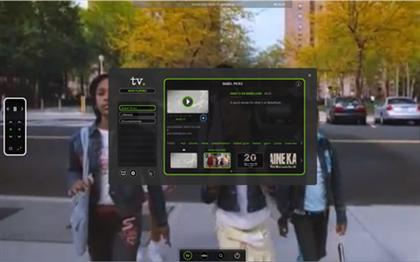
When YouTube started blazing onto everyone’s PCs bringing a new world of amateur content and entertaining clips we began to see the potential for watching video online.
When Joost released its first beta we caught a peek at the potential of an internet television platform that could create a TV-like experience.
These two companies have become synonymous with the internet TV revolution. But while everyone has been focusing on the likes of Joost and begging for invites, another internet video start-up has creeped onto the scene to contend with Joost.
The name of this promising start-up?
BabelGum
With its full-screen display, TV-like interface and streaming content Babelgum was bound to be compared directly to its nearest rival Joost, which has already gained a significant following and position within the market.
Nevertheless, if you dig beneath the surface and focus on the actual content being targeted by the two, significant differences begin to emerge. For while Joost is doing its best to make high profile deals with big mainstream TV networks, essentially attempting to replicate the TV experience down to the programming level, Babelgum has taken a different tack.
Driven by an Italian heart, no Babelgum is targeting independent producers to supply the type of content for its network that will not be easily found elsewhere. In a world where content is everything and both design and technical issues play a somewhat secondary role – take YouTube as a case in point – this could well prove to be a fruitful strategy.
While the platform is still in the early stages of its beta release, Babelgum is set to bring video uploading capabilities within this month. This does not mean that the platform will become one driven exclusively by amateur, user generated video, but highlights the opportunities that Babelgum will provide to professionally minded independent producers, who will be able to get their work seen by a larger audience and even profit from an advertising revenue to be shared with the Babelgum guys.
In my review of Babelgum I take a look at its capabilities, interface, current line up of content, and place in the evolving Internet television marketplace.
Here are the details:
BabelGum Revew – An Overview
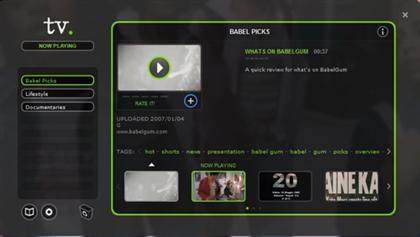
Babelgum is the latest attempt to bring our online video watching experience closer to that of traditional television, with added interactivity brought along for the ride. Its closest point of comparison is Joost, which I reviewed in full last week.
In short, Babelgum offers a range of streaming content that can be selected and viewed from a simple TV-like interface, in either windowed or full-screen mode. An on-screen remote control allows you to skip back and forth between clips, pause the current show, and select from a range of thematically arranged channels much as you might from the menu of your satellite or cable TV box.
As the platform uses peer-to-peer technology, the quality and reliability of the streaming remains consistent regardless of how many users are currently watching, each serving as a node, simultaneously uploading and downloading content to peers in the network.
While full-screen viewing is best reserved for smaller monitors, it is certainly watchable, and playback of videos is smooth and free of glitches and pauses in the action, which is good news.
In this technical respect there is little to separate Babelgum and Joost. What Joost gains in interface design for instance, Babelgum takes back in simplicity.
The following 10 minute video gives you a good overview of the application, its intended audience, current capabilities and features in the pipeline:
Video credit: Jonathan Marks
The Interface

The icons used here are all intuitive and don’t bear talking about beyond their capacity to effectively do the job.
At the top of the screen the current show’s title is displayed, along with a progress bar, time elapsed and time remaining.
And then down at the bottom you have simple icons that let you switch between tv mode, video mode, and search mode, with an off / on switch completing the set.
Simplicity is key here and I found the interface very easy to navigate and make use of. At the time of writing Babelgum doesn’t support the various social networking widgets incorporated into the Joost platform, but apparently there are plans to make the viewing experience a more directly sociable one in future versions.
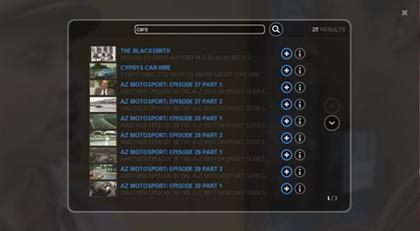
Clicking on the TV button lets you search content via a channel guide, run a keyword search and add content to your personal playlists using an ‘add’ icon. These are stored in the ‘video’ section of the application, where you can arrange your favorite programs into your own custom line-ups.
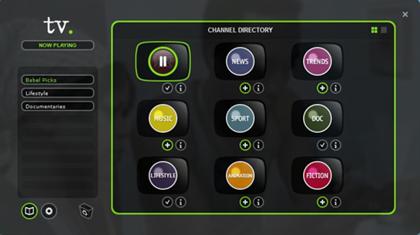
As such it is quite possible to watch a channel chronologically, with one show following the next ad infinitum, or else pick and choose your own custom programming, arranged into personalized playlists.
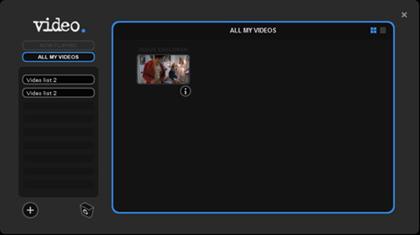
Thanks to user-generated tagging and rating of programs, there is another feature called “smart channels”, which will create programming for you automatically according to your expressed tastes and interests. All you have to do is select from a collection of tags, and Babelgum will create a custom channel from your choices.
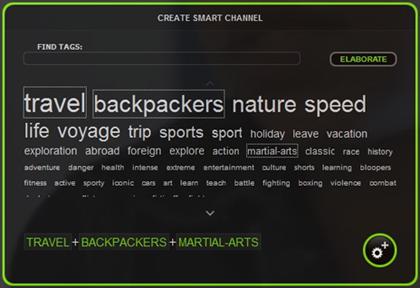
Babelgum Content
Babelgum content can be accessed in a number of ways, then, but the most straightforward of all is the simple channel guide. Here you can instantly find videos via nine thematically arranged channels. These are comprised of the following themes:
- Babel Picks – a mixture of highlights of the sum total of Babelgum programming
- News – updated with the latest daily news from leading news agencies like AP
- Trends – encompassing fashion, design and the latest in what’s hip and happening
- Music – blending music videos, news and tour footage
- Sport – ranging from extreme sports to the usual football fare
- Documentaries – covering the full scope of documentary film-making
- Lifestyle – focusing on food, wine, and the home
- Animation – blending classic cartoons with anime and independent productions
- Fiction – featuring short films, classic movies and TV shows
This offers a good blend that is likely to appeal in some part to most tastes, and while the current line-up of content is far from comprehensive, with few items that really grab you and shake you around, the promise is certainly there.
However, Babelgum has managed to enter the scene with an edgy, cool independent feel that I hope it will further build on. Among the initial line-up in programming is some new work by acclaimed independent director Spike Lee, who has been championing the cause, and this should do plenty to establish Babelgum credentials.
In this short video clip we see highlights from a recent presentation of Babelgum, with founderSilvio Scaglia, CEO Erik Lumer and film-maker Spike Lee explaining what the platform means for them, and what it stands to achieve:
As Spike Lee points out, here is a platform with the potential to act as a great showcase for global independent film-makers that may otherwise run afoul of the limited, box-office driven distribution channels currently provided by the traditional film industry.
As with Joost the quality of this content will make or break the platform far more than such trivialities as the interface or any bolted-on social networking functions. What makes me hopeful about the Babelgum platform is the fact that it is in the process of opening up to professional content providers from both mainstream and fringe, independent backgrounds.
Open Call To Independent Producers
One of the things that excites me about Babelgum as a platform, then, is its openness to new content owners and developers. As I have said, this doesn’t mean that they are looking for YouTube-esque user generated content, but rather professionally produced, independent programming worthy of television broadcast.
This has the very real potential to provide new opportunities for independent film and TV producers to distribute and profit from their work, while bringing fresh and original content to Babelgum viewers. Given that professionals from both the film and TV industries, and especially their fringes, are being confronted with the need to find new ways of monetizing their work, Babelgum may well prove to be a popular destination.
The Babelgum website lists some of the benefits and procedures for these content owners, which include a split in advertising revenues on what seems to be a CPM basis.
Coming this month an nline video publishing platform is due to be launched for such professional producers. In the meantime contact details have been given on the Babelgum website for prospective content providers.
System Requirements
Unlike its counterpart Joost Babelgum does not currently support the Mac platform. If you want to use the Babelgum client you will need:
- Windows XP
- 1.0 GHz Pentium class processor or better
- QuickTime 7
- 512MB RAM
- 32MB video RAM
- Broadband Internet connection
Conclusions
While Babelgum, like its nearest counterpart Joost is far from perfect, and doesn’t yet threaten television in terms of content, it is certainly a step in the right direction.
Furthermore, while Joost has gone for a great deal of licensed content from big names, such as MTV, Babelgum seem to be focusing on providing content that you won’t find on the mainstream media networks. While at the moment the content featured on both platforms falls short of spectacular, I personally find the promise of Babelgum far more interesting.
Until Joost reaches very high market penetration it is extremely unlikely that it is going to see the cream of the content from those networks it has signed deals with. In fact, as it seems now, it
is much more likely to receive sub-par cast offs, old re-runs and ‘straight-to-video’ style movie content at best. This tight relationship with the big media networks might not turn out to be so wonderful a selling point after all.
On the other hand, Babelgum is actively eliciting work from independent producers, and is due to launch an upload platform within this month. Offering revenue shares on advertising, should Babelgum play this card well and provide strong editorial decision making throughout, this could make for a far more interesting network bubbling up from the growing pro-am and independent production landscape.
Time will tell on both counts, but it seems slightly vacuous to insist on a clear cut Joost vs. Babelgum battle, let alone to attempt to declare a victor at this stage in the proceedings. For all of their similarities technically, the two look to be headed in distinctly different directions, and it won’t be long before they are joined by other serious contenders.
Babelgum is currently in open beta, and can be downloaded from the Babelgum website.
Additional Resources
If you would like to read more about Babelgum, you might want to check out the following links:
- The Babelgum website
- Babelgumfan.com, a fan site
- The official Babelgum blog
- Mashable coverage
- TechCrunch comparison with Joost
This individual article was written by Michael Pick and has been adapted from MasterNewMedia. It is licensed under the Creative Commons.
